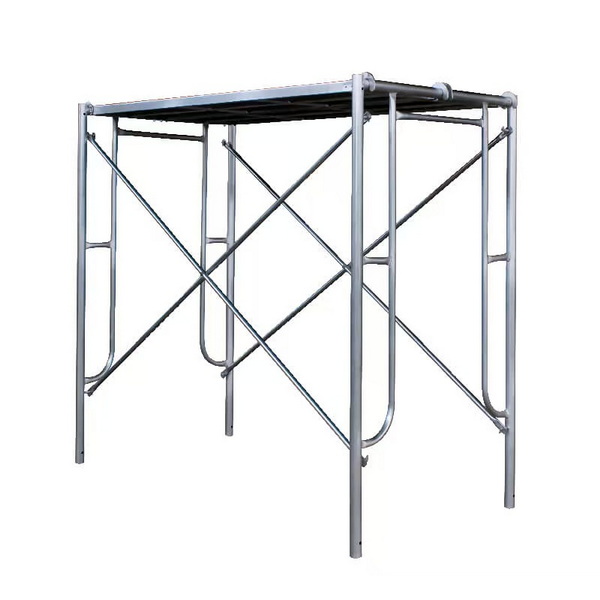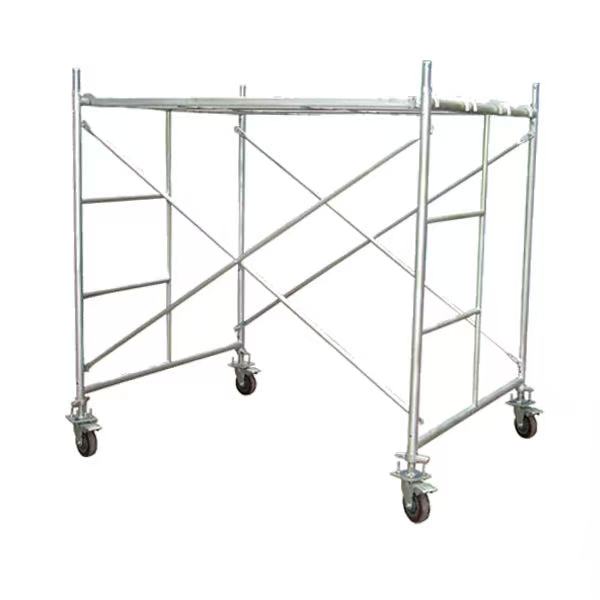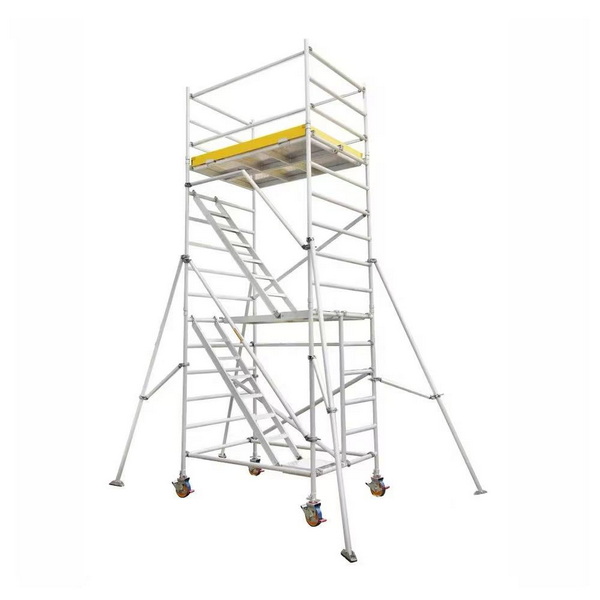Content Menu
● What is an Aluminium Scaffolding H Frame?
● Essential Components and Tools
● Step-by-Step Assembly Guide
>> 1. Prepare the Ground and Work Area
>> 2. Install Adjustable Wheels or Base Plates
>> 3. Position the First H Frame
>> 4. Attach Horizontal Braces
>> 5. Set the Second H Frame and Connect Braces
>> 6. Install Diagonal Braces
>> 7. Add Platforms
>> 8. Repeat for Additional Levels
>> 9. Install Guardrails and Toeboards
>> 10. Attach Adjustable Stabilizers (Outriggers)
>> 11. Final Inspection
● Additional Tips for Efficient Assembly
>> Plan and Organize Before Assembly
>> Work in Teams
>> Use Proper Personal Protective Equipment (PPE)
>> Follow Manufacturer Instructions
>> Regularly Inspect Components
>> Maintain Level and Plumb
● Conclusion
● FAQ
>> 1. What safety precautions should I take when assembling aluminium scaffolding H frame?
>> 2. Can one person assemble an aluminium scaffolding H frame scaffold?
>> 3. How do I ensure the scaffold is stable?
>> 4. How high can I safely build an aluminium scaffolding H frame scaffold?
>> 5. How do I maintain aluminium scaffolding H frames?
Aluminium scaffolding H frame systems are popular in construction and maintenance due to their lightweight, durability, and ease of assembly. Efficient assembly of an aluminium scaffolding H frame scaffold improves safety, saves time, and reduces labor costs. This detailed guide covers the step-by-step process of assembling an aluminium scaffolding H frame scaffold efficiently, with practical tips, safety advice.

What is an Aluminium Scaffolding H Frame?
An aluminium scaffolding H frame consists of vertical frames shaped like the letter "H" connected by horizontal and diagonal braces. The aluminium material offers corrosion resistance and a high strength-to-weight ratio, making the scaffold easy to handle and durable for various applications such as bricklaying, painting, and repairs.
Essential Components and Tools
Before assembly, gather and inspect all components and tools:
- Aluminium H frames: Vertical frames with multiple rungs and spigot connectors.
- Lockable adjustable wheels or base plates: For mobility or stability on uneven ground.
- Horizontal braces: Connect frames horizontally and support platforms.
- Diagonal braces: Provide lateral stability and prevent sway.
- Platforms (decking): Work surfaces, often with hatch access.
- Guardrails and toeboards: Fall protection for workers.
- Lock pins and clips: Secure connections.
- Adjustable stabilizers (outriggers): Enhance scaffold stability.
- Tools: Spirit level, tape measure, hammer or mallet, wrench, and PPE (helmets, gloves, boots, harness).
Step-by-Step Assembly Guide
1. Prepare the Ground and Work Area
Select a firm, level surface free of debris or obstructions. If the ground is uneven, use sole boards or adjustable base plates to level the scaffold base. Clear the area of hazards such as overhead lines or pedestrian traffic.
2. Install Adjustable Wheels or Base Plates
Insert lockable adjustable wheels or base plates into the legs of the first H frame. Lock wheels with pins and engage brakes to prevent movement during assembly.
3. Position the First H Frame
Place the first H frame upright on the prepared base. Ensure the broader side faces outward for stability. Check the frame is plumb and steady.
4. Attach Horizontal Braces
Snap horizontal braces onto the vertical tubes of the first frame at the lowest rung level. Leave the other end resting on the ground temporarily.
5. Set the Second H Frame and Connect Braces
Place the second H frame parallel to the first, aligned and plumb. Connect the horizontal braces between the two frames securely with lock pins.
6. Install Diagonal Braces
Attach diagonal braces between the frames to increase rigidity. Diagonal braces typically span three rungs and should be fixed close to the vertical tubes.
7. Add Platforms
Install platforms on the third rung or as required. Platforms with hatches allow safe access to higher levels. Secure platforms to prevent movement.
8. Repeat for Additional Levels
Add more H frames, horizontal and diagonal braces, and platforms to build higher. Use ladders or hatch access for safe movement between levels.
9. Install Guardrails and Toeboards
For fall protection, install guardrails on the uppermost platform and toeboards along edges to prevent objects from falling.
10. Attach Adjustable Stabilizers (Outriggers)
Fix stabilizers to the scaffold to prevent tipping, extending the base footprint for greater stability.
11. Final Inspection
Check all connections for secure locking. Verify scaffold stability, level, and plumb. Inspect components for damage before use.

Additional Tips for Efficient Assembly
Plan and Organize Before Assembly
Efficiency starts with thorough planning. Before assembling the aluminium scaffolding H frame, review the site conditions, scaffold design, and required height. Organize all components and tools nearby to minimize downtime searching for parts. A clear assembly plan helps the team work systematically and safely.
Work in Teams
Scaffold assembly is safer and faster with at least two people. One person can hold components steady while the other secures braces and pins. Teams can communicate to avoid mistakes and handle heavy or awkward parts safely.
Use Proper Personal Protective Equipment (PPE)
Ensure all workers wear helmets, gloves, steel-toed boots, and harnesses if working at height. PPE reduces injury risks during assembly and use.
Follow Manufacturer Instructions
Each aluminium scaffolding H frame system may have specific assembly requirements. Always follow the manufacturer's manual to ensure correct and safe assembly.
Regularly Inspect Components
Check all parts for damage before and during assembly. Replace any bent, cracked, or corroded components immediately to maintain scaffold integrity.
Maintain Level and Plumb
Use a spirit level frequently during assembly to keep the scaffold vertical and stable. Adjust base plates or wheels as necessary.
Conclusion
Efficient assembly of an aluminium scaffolding H frame scaffold requires careful preparation, systematic construction, and strict adherence to safety protocols. By following the step-by-step guide and utilizing the recommended tools and safety equipment, workers can build a stable, secure, and compliant scaffold rapidly. The lightweight and corrosion-resistant nature of aluminium scaffolding H frames makes them ideal for a wide range of construction and maintenance tasks, enhancing productivity while safeguarding workers.

FAQ
1. What safety precautions should I take when assembling aluminium scaffolding H frame?
Always wear PPE including helmets, gloves, and harnesses. Inspect all components for damage before use, ensure the ground is level, and never exceed load ratings. Use guardrails and toeboards on all platforms.
2. Can one person assemble an aluminium scaffolding H frame scaffold?
It is recommended to have at least two people for safety and efficiency. Larger or taller scaffolds require teams and supervision by a competent person.
3. How do I ensure the scaffold is stable?
Use adjustable base plates or wheels to level the scaffold, install all horizontal and diagonal braces securely, and attach stabilizers if needed. Perform a final inspection to confirm plumb and level.
4. How high can I safely build an aluminium scaffolding H frame scaffold?
Maximum height depends on manufacturer guidelines and local regulations. Typically, scaffolds over 4 meters require certification and may need to be tied into structures or stabilized with outriggers.
5. How do I maintain aluminium scaffolding H frames?
Clean components after use, inspect regularly for damage, store in dry shaded areas, and replace any damaged parts immediately. Avoid exposure to acids or prolonged sunlight.






















